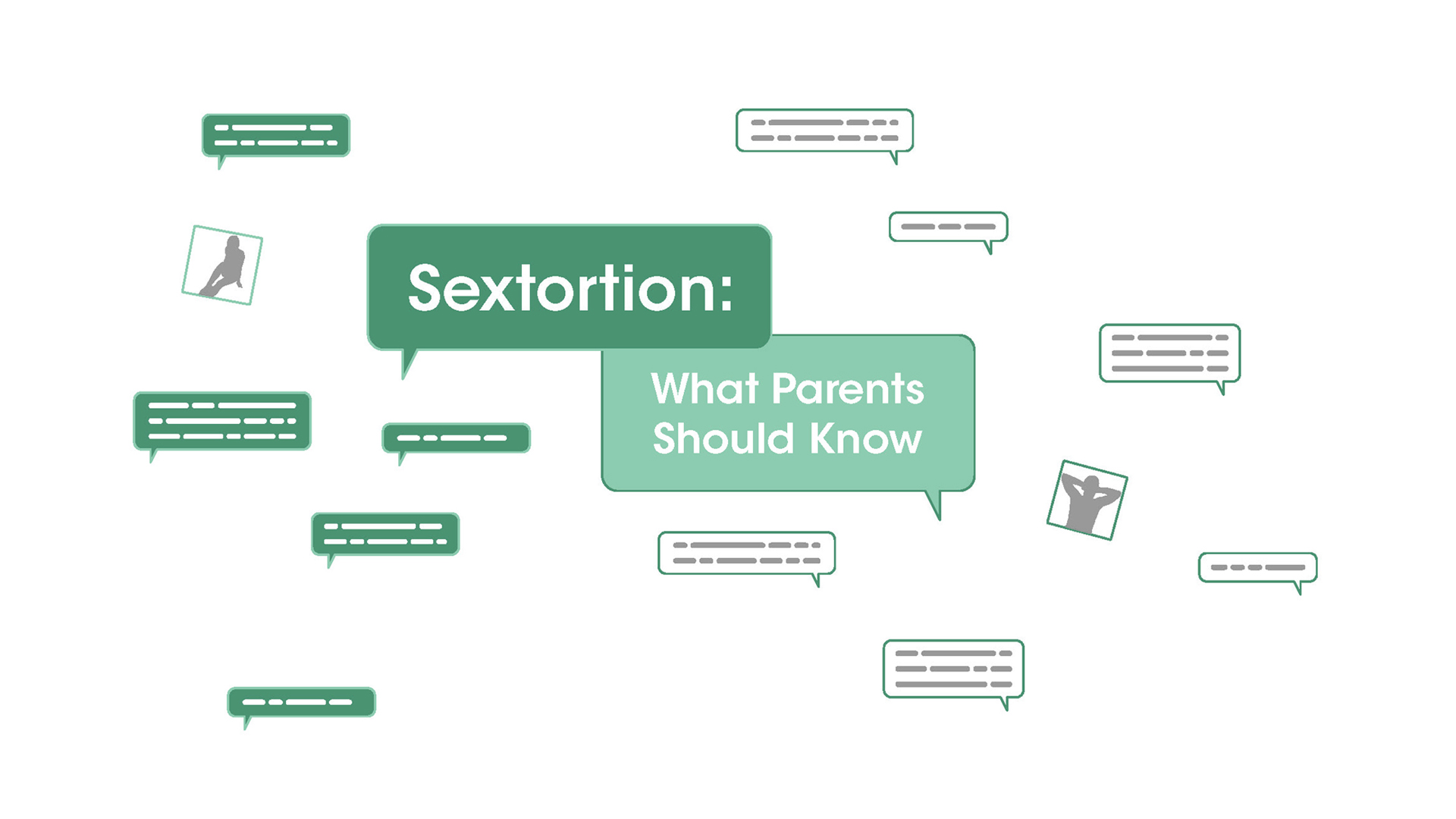Sextortion: What Parents Should Know
You’ve likely heard of sexting or "trading" – sharing and receiving sexually explicit messages and nude or partially nude images by text or through an app. Though sexting can be part of normal adolescent sexual development, there are also risks, particularly sextortion.
Who are the Perpetrators?
60% of the time, the offender is known to the victim.
Often, victims know their extorters. They are current or former romantic partners. They may hold an initial sexual image that was sent intentionally by the victim and are now using it to get more content; threatening to spread the picture to friends and family if the victim does not comply.
Sixty percent of the time, the offender is known to the victim. Other times, the offender was met online. This could be a lone-actor or a coordinated group of extorters who work together to target and elicit explicit content from their victims. This type of extorter may request additional content (often of an increasingly explicit nature) or money.
How Does it Happen?
When it's an Unknown Offender
Approach
Offenders often approach a child on social media after using it to learn about the child’s interests, friends, school, family, etc.
Move platforms
It is common for offenders to make initial contact with a victim on one platform, then ask them to move to a second or third platform, usually those with encrypted messaging systems in order to make tracking their crime more difficult.
Coerce
This includes using tactics like:
» Initially offering something of value such as money or drugs in exchange for a sexual image
» Pretending to work for a modeling agency
» Developing a false rapport with the child
» Secretly recording explicit videos/ messages during chats
» Threatening to physically assault the child or his/her family
» Using multiple identities to contact the child
» Pretending to be younger and/or a member of the opposite sex
» Hacking accounts to steal sexual images, or
» Threatening to commit suicide if no images are sent
When it's Someone Known
Acquire the Image
Often, the extorter is an exromantic partner who may have received the image deliberately from the victim while involved in a relationship.
Threaten
The extorter may use the threat of spreading the image to force the victim into staying in/ returning to the relationship after it has ended, or to acquire additional sexual content.
In either case, the harassment rarely stops if a victim complies with the extorter's demands!
What Can I Do About It?
Talk About Technology
Children should grow up expecting that their parents are a part of their digital lives. Regular check-ins about their online interactions should be the norm. Include children in setting rules and limits for their tech-time.
Talk About Sexuality and Relationships
Talking about your family’s expectations and values regarding sex and relationships is an important first step. These conversations should happen regularly. Be sure to discuss the characteristics of healthy relationships, such as having and respecting boundaries and practicing consent. Explain that both pressuring someone and being pressured into sexual behaviors that are uncomfortable or unsafe are NOT OK. Similarly, help children understand that they should never forward sexts they may receive from others. Limiting the image’s spread reduces the risk of it falling into dangerous hands.
Learn more about online safety at MissingKids.org/NetSmartz.

